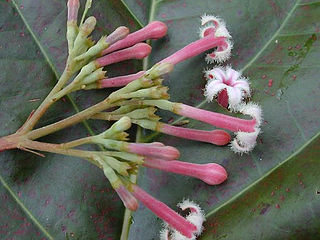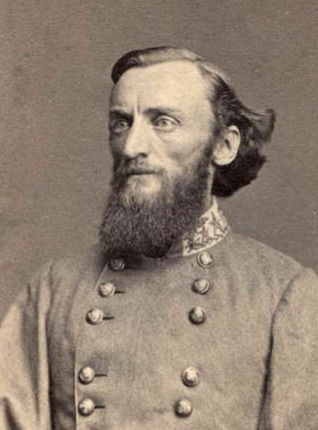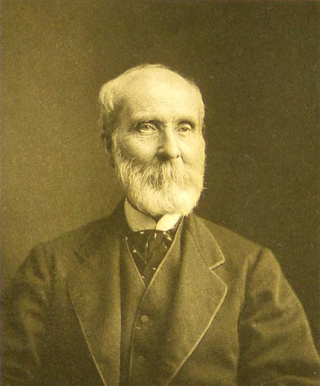
Quinine is a medication used to treat malaria and babesiosis. This includes the treatment of malaria due to Plasmodium falciparum that is resistant to chloroquine when artesunate is not available. While sometimes used for nocturnal leg cramps, quinine is not recommended for this purpose due to the risk of serious side effects. It can be taken by mouth or intravenously. Malaria resistance to quinine occurs in certain areas of the world. Quinine is also used as an ingredient in tonic water and other beverages to impart a bitter taste.

Cinchona is a genus of flowering plants in the family Rubiaceae containing at least 23 species of trees and shrubs. All are native to the tropical Andean forests of western South America. A few species are reportedly naturalized in Central America, Jamaica, French Polynesia, Sulawesi, Saint Helena in the South Atlantic, and São Tomé and Príncipe off the coast of tropical Africa, and others have been cultivated in India and Java, where they have formed hybrids.

Arrow Rock is a village in Saline County, Missouri, United States, located near the Missouri River. The entire village is part of the National Historic Landmark Arrow Rock Historic District, designated by the Department of the Interior, National Park Service in 1963. It is significant in the history of Westward Expansion, the Santa Fe Trail, and 19th-century artist George Caleb Bingham. The town is well known for the Arrow Rock Lyceum Theatre, hosting over 33,000 patrons every year.

George Caleb Bingham was an American artist, soldier and politician known in his lifetime as "the Missouri Artist". Initially a Whig, he was elected as a delegate to the Missouri legislature before the American Civil War where he fought against the extension of slavery westward. During that war, although born in Virginia, Bingham was dedicated to the Union cause and became captain of a volunteer company which helped keep the state from joining the Confederacy, and then served four years as Missouri's Treasurer. During his final years, Bingham held several offices in Kansas City, while also serving as Missouri's Adjutant General. His paintings of American frontier life along the Missouri River exemplify the Luminist style.

Claiborne Fox Jackson was an American politician of the Democratic Party in Missouri. He was elected as the 15th Governor of Missouri, serving from January 3, 1861, until July 31, 1861, when he was forced out by the Unionist majority in the Missouri General Assembly after planning to force the secession of the state.
Blackwater fever is a complication of malaria infection in which red blood cells burst in the bloodstream (hemolysis), releasing hemoglobin directly into the blood vessels and into the urine, frequently leading to kidney failure. The disease was first linked to malaria by the Sierra Leone Creole physician John Farrell Easmon in his 1884 pamphlet entitled The Nature and Treatment of Blackwater Fever. Easmon coined the name "blackwater fever" and was the first to successfully treat such cases following the publication of his pamphlet.

Luke Pryor Blackburn was an American physician, philanthropist, and politician from Kentucky. He was elected the 28th governor of Kentucky, serving from 1879 to 1883. Until the election of Ernie Fletcher in 2003, Blackburn was the only physician to serve as governor of Kentucky.

John Sappington Marmaduke was an American politician and soldier. He was the 25th governor of Missouri from 1885 until his death in 1887. During the American Civil War, he was a senior officer of the Confederate States Army who commanded cavalry in the Trans-Mississippi Theater.

John Breathitt was an American politician and lawyer who was the 11th Governor of Kentucky. He was the first Democrat to hold this office and was the second Kentucky governor to die in office. Shortly after his death, Breathitt County, Kentucky was organized and named in his honor.

Brigadier Sir Neil Hamilton Fairley, was an Australian physician, medical scientist, and army officer who was instrumental in saving thousands of Allied lives from malaria and other diseases.

Meredith Miles Marmaduke was an American politician who served as the 8th governor of Missouri in 1844, to fill out the term of Governor Thomas Reynolds, who had committed suicide. A member of the Democratic Party, he had been elected and served as the 6th lieutenant governor.

The history of malaria extends from its prehistoric origin as a zoonotic disease in the primates of Africa through to the 21st century. A widespread and potentially lethal human infectious disease, at its peak malaria infested every continent except Antarctica. Its prevention and treatment have been targeted in science and medicine for hundreds of years. Since the discovery of the Plasmodium parasites which cause it, research attention has focused on their biology as well as that of the mosquitoes which transmit the parasites.

Sappington Cemetery State Historic Site is a Missouri state historic site located approximately five miles (8.0 km) southwest of Arrow Rock in Saline County. The cemetery houses the graves of John Sappington and two of his sons-in-law, Meredith Miles Marmaduke and Claiborne Fox Jackson, who each served as governor of Missouri before the American Civil War.
Warburg's tincture was a pharmaceutical drug, now obsolete. It was invented in 1834 by Dr. Carl Warburg.

Jean Charles Faget was a medical doctor born on June 26, 1818, in New Orleans. He is best known for the Faget sign—a medical sign that is the unusual combination of fever and bradycardia. The sign is an important diagnostic symptom of yellow fever.

Deputy Surgeon-General John Small was a British Army officer, physician, and early advocate for the use of large doses of quinine to treat malaria.

Edward Albert Koch (1843-1901) was a German-born medical practitioner in Cairns, Queensland, Australia, known for his treatment of malaria and his early recognition of the role played by mosquitoes in transmitting the disease. Dr Koch's fever remedy and preventative measures played a significant role in controlling endemic malaria in far North Queensland in the late 19th century and first half of the 20th century.

Edward Hare was an English surgeon and writer. He served as Director-General of Hospitals in Bengal, India. Hare is best known for his medical work in using quinine for treatment of malaria fevers. He was also a vegetarianism activist.
William Fletcher was an English medical doctor who in 1907 published the results of an experiment showing beriberi could be prevented by eating unpolished rice.
















